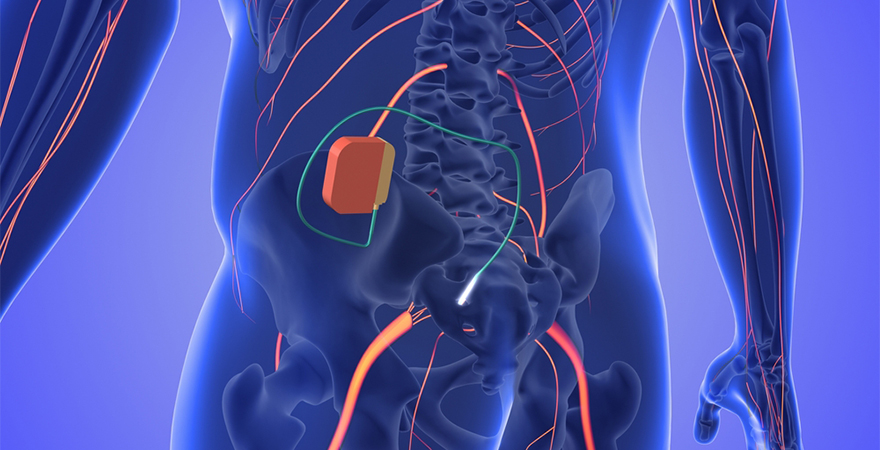
May 22, 2024
We understand that pain can be a debilitating condition that significantly impacts quality of life.
At times, it may be necessary to explore many options that may even sound unconventional. However, we are not big fans of invasive treatments.
Therefore, in today’s informative blog, we will delve deep into the Spinal Cord Stimulator (SCS) implant, covering its functioning, benefits, and risks.
You’ll come to understand that this option is for those who do not respond to traditional treatments, as SCS implants can offer hope for relief.
Let’s see our topics for the blog!
What is a Spinal Cord Stimulator (SCS)?
There’s always a beginning, right? First and foremost, it’s crucial to understand what this stimulator is and how it works! So let’s see…
An SCS is a surgically implanted device that sends mild electrical pulses to the spinal cord, with the aim of interrupting or masking pain signals traveling to the brain.
How does an SCS work?
Yes, we know the previous information isn’t overly explicit, so we want to better explain how the two components installed in your body will work.
Firstly, it’s important to understand that the SCS system consists of two main components:
- The Electrodes: These are inserted near the spinal cord in the area of pain and transmit electrical signals to the spinal cord.
- The Generator: Placed beneath the skin, usually in the abdomen or buttocks, it houses the battery and controls to adjust the level of stimulation.
Once installed in your body, the electrodes will emit a series of customized electrical pulses as per the patient’s need, controlled by the generator.
The resulting sensation is often described as a pleasant tingling or buzzing, rather than the original pain. This will essentially replace the pain your body was experiencing.

What is an SCS used for?
Now that we’ve understood what it is and how it works, it’s time to know what type of treatments SCS can be used for.
SCS is approved to treat a variety of chronic pain conditions that do not respond adequately to other treatments, including:
- Neuropathic pain from nerve damage, such as diabetic neuropathy or radiculopathy.
- Intractable back and leg pain.
- Pain from refractory angina or cardiac ischemia.
- Spasticity pain following a spinal cord injury.
What are the features of an SCS?
You’re probably wondering, to begin with, does a Spinal Cord Stimulator have to have certain features?
And the truth is, yes! Modern SCS devices offer advanced features that allow for greater customization and control over treatment. Among their features, you’ll find:
- Programming: The intensity, frequency, and duration of electrical pulses can be adjusted to optimize pain relief.
- Control Options: Some devices are controlled with a remote, while others allow for wireless control via a tablet or app.
- Motion Detection: Some SCS can automatically adjust stimulation based on body movement or position.
How is pain treated with an SCS?
SCS treatment involves a gradual process:
- Trial: A temporary SCS is implanted to assess its effectiveness over a trial period, usually one to two weeks.
- Permanent Implant: If the trial is successful, the permanent device implantation is carried out.
- Programming and Monitoring: The physician will program the SCS according to individual needs and regularly monitor the patient’s progress.
- Non-invasive therapies for chronic pain:
- Before considering an SCS, less invasive treatment options are usually recommended, such as:
- Medications: Analgesics, anticonvulsants, or antidepressants.
- Physical Therapy: Exercises and techniques to improve strength, flexibility, and range of motion.
- Cognitive-Behavioral Therapy: Strategies to cope with pain and improve quality of life.
- Injections: Steroid injections, nerve blocks, or neurotoxins.

How do doctors proceed with SCS therapies?
As promised, the SCS implantation procedure is minimally invasive and generally performed under local anesthesia or sedation.
However, there should always be a prior assessment to ensure that the patient is truly suitable for the treatment or if there are other viable options for them, as long as we understand how the process works!
- Electrode Insertion: The electrodes are carefully inserted into the epidural space near the spinal cord.
- Generator Implementation: A small incision is made to place the generator beneath the skin.
- Connection: The electrodes are connected to the generator via thin wires.
- Incision Closure: Incisions are closed with sutures or staples.
By this point, we’ve understood and known almost everything important you need to know before an SCS procedure, but of course, we always like to make sure you know everything well.
So we want to share with you the benefits and risks of this type of treatment so that you are even clearer if it is really a procedure for you.
What are the risks and benefits of SCS treatment?
Benefits:
- Significant relief from chronic pain.
- Improved quality of life.
- Reduction in the use of pain medications.
- Possibility to avoid additional surgeries.
Risks:
- Infection at the implantation site.
- Pain or paresthesia in the electrode area.
- Displacement or malfunction of the device.
- Risks associated with surgery.

As you can see, the Spinal Cord Stimulator (SCS) implant offers a promising solution for individuals suffering from chronic pain that has not responded to traditional treatments.
This innovative approach to pain management can significantly improve the quality of life for patients by providing relief and reducing dependency on medications. At Synergex Med, we understand the challenges of living with chronic pain and are committed to offering comprehensive care and support to our patients.
Through advanced treatments like SCS implants and our dedication to excellence in pain management and neurology, we strive to empower individuals to live healthier, more comfortable lives.
If you or a loved one are struggling with pain, we encourage you to explore the possibilities of SCS therapy and discover how Synergex Med can make a difference in your journey towards better health and well-being.


